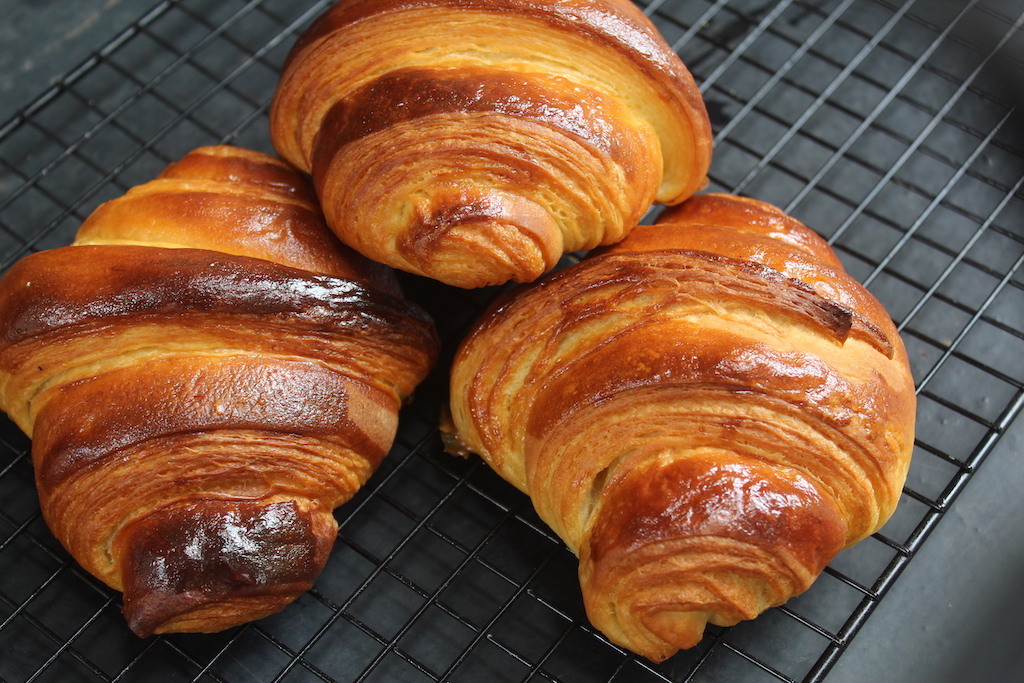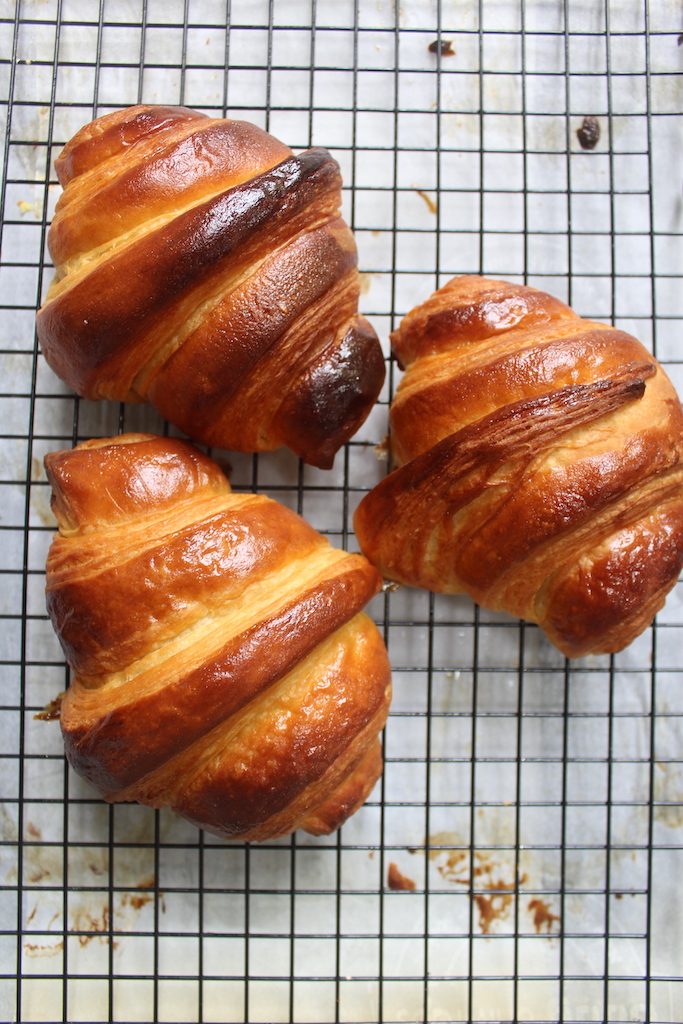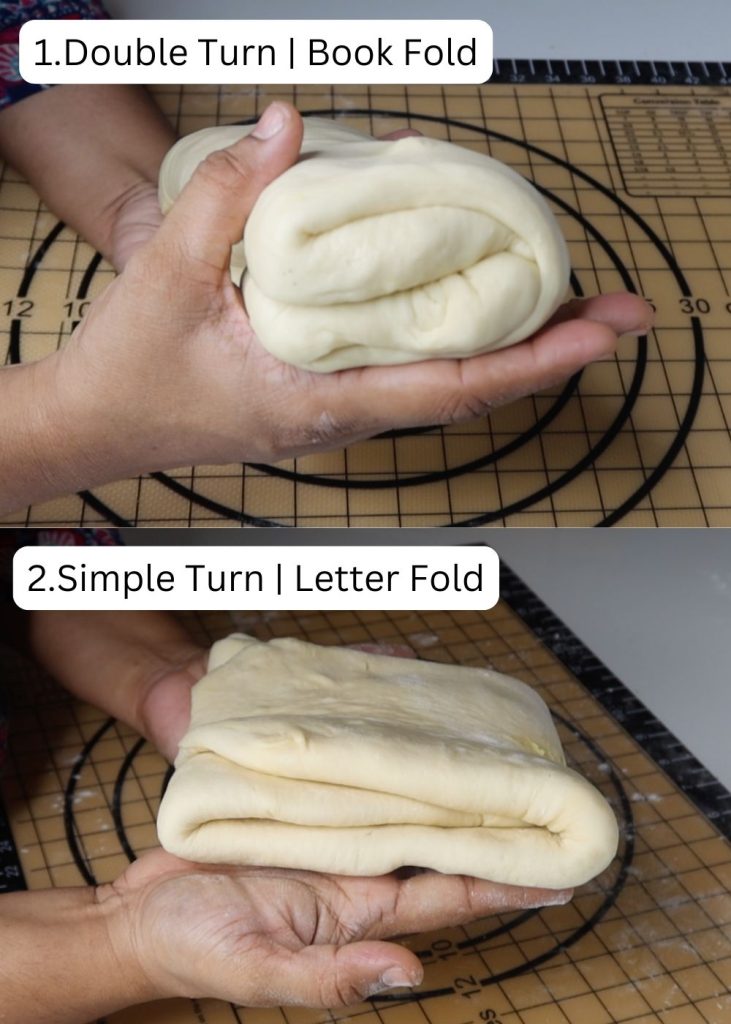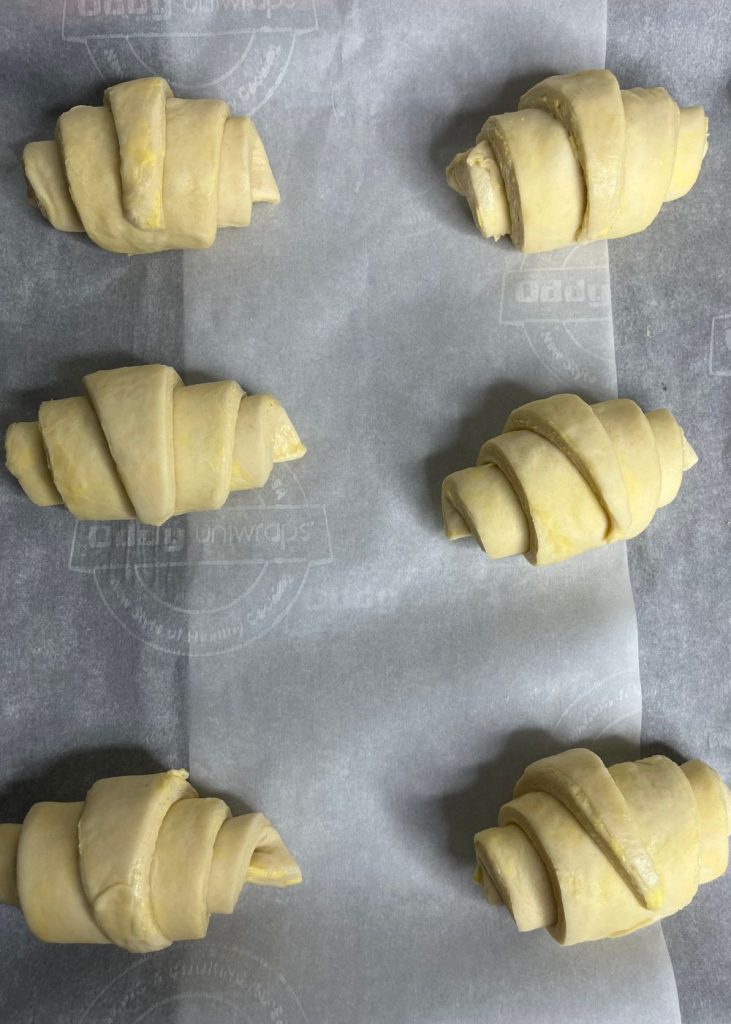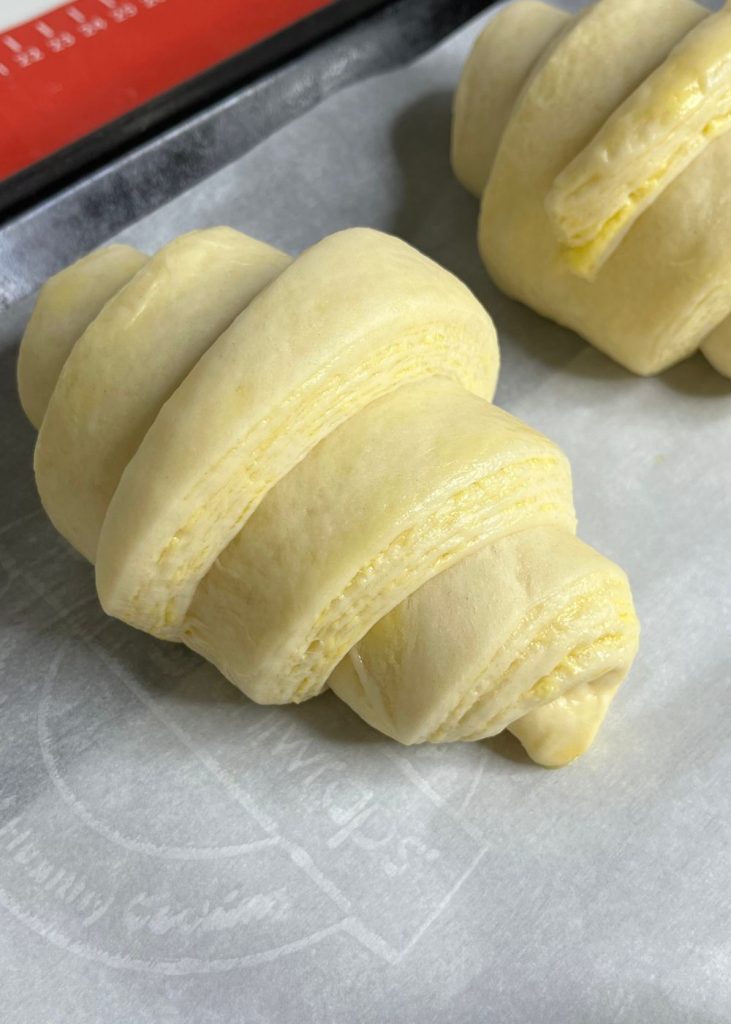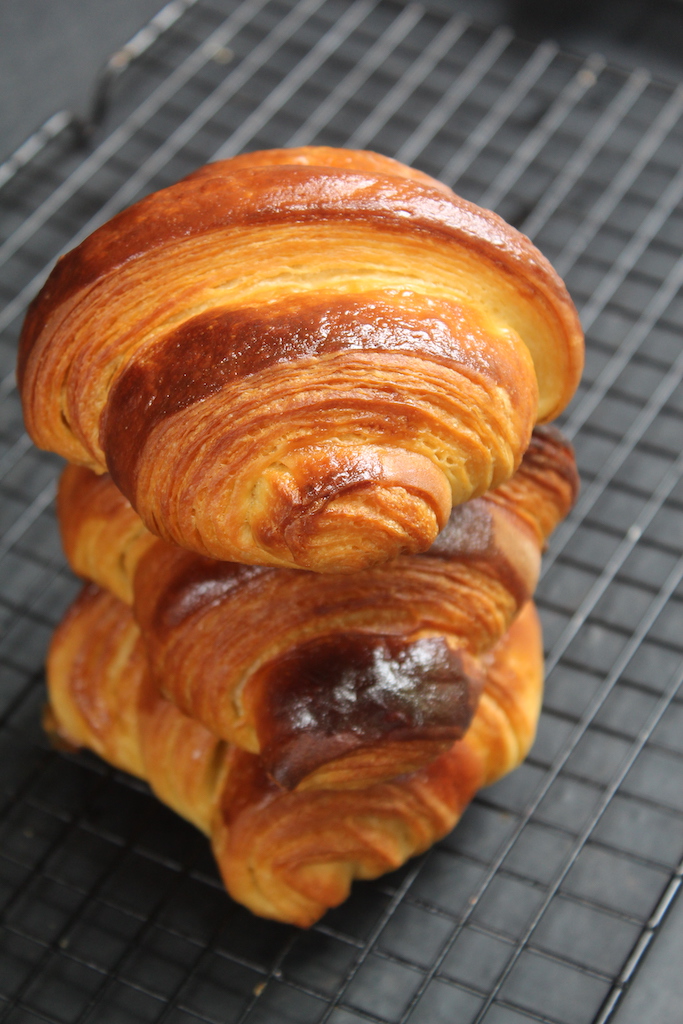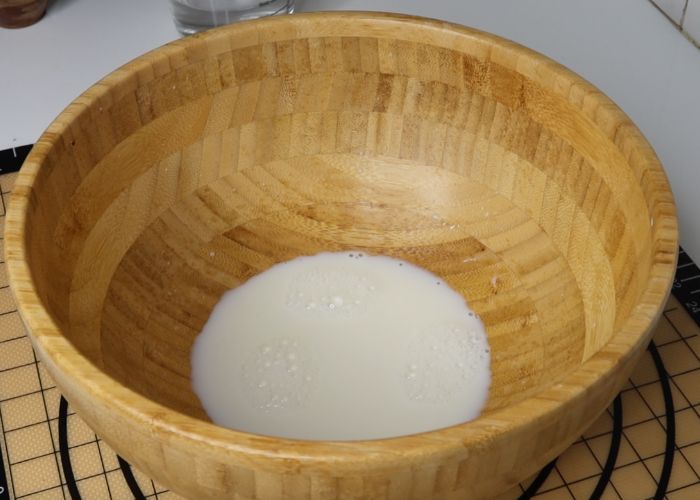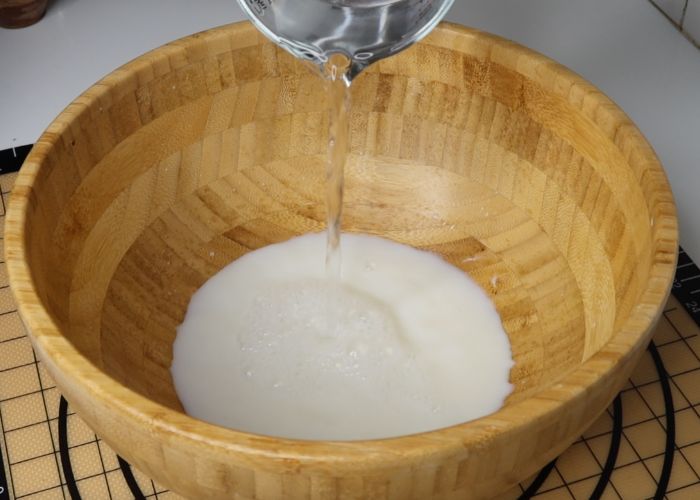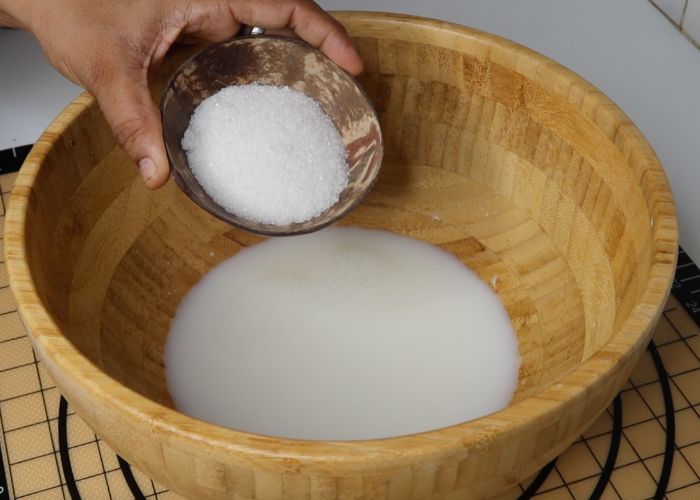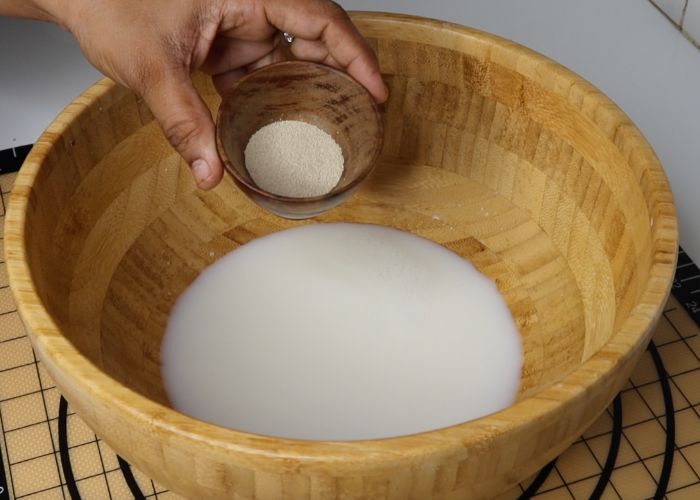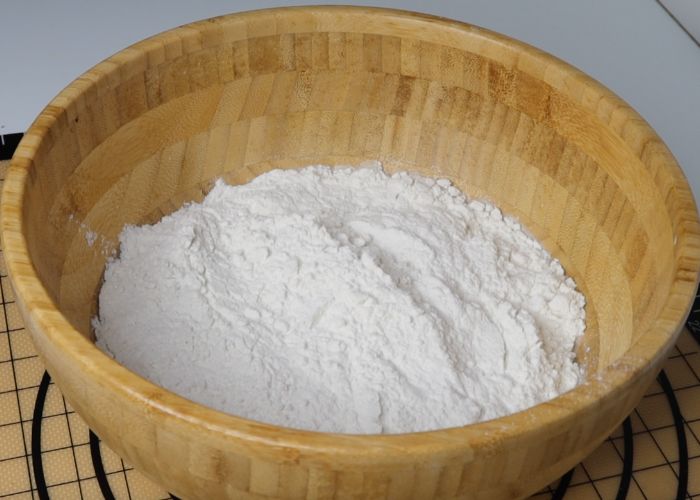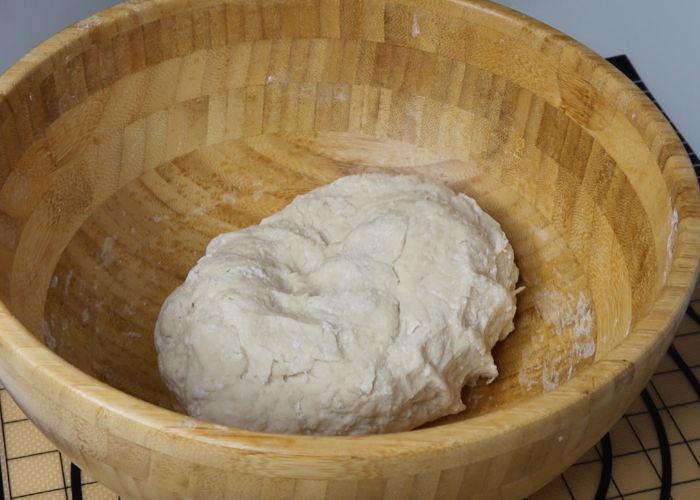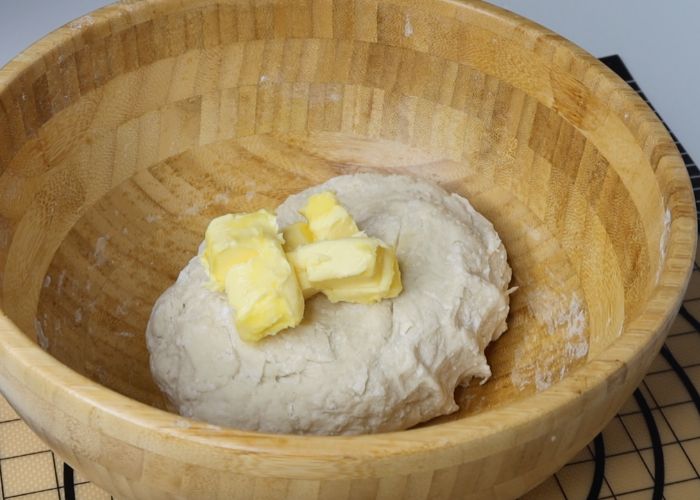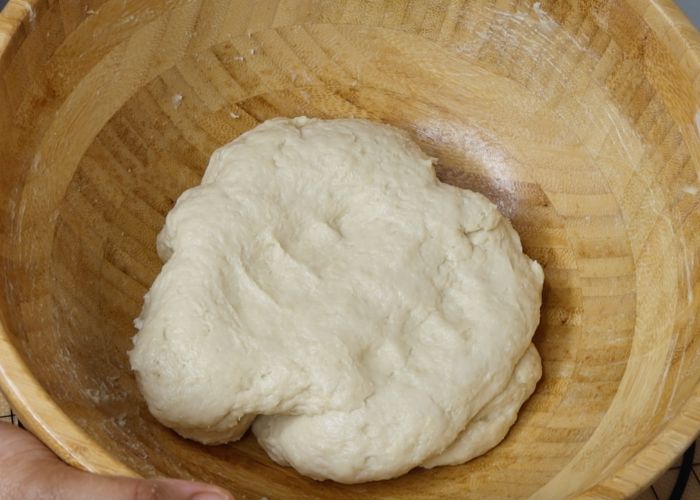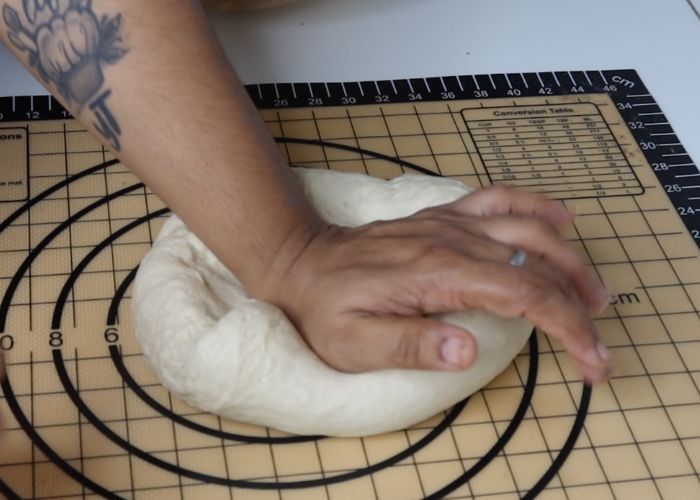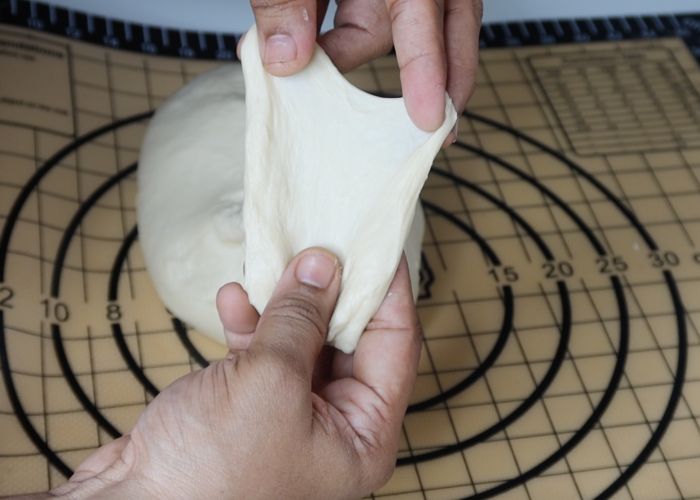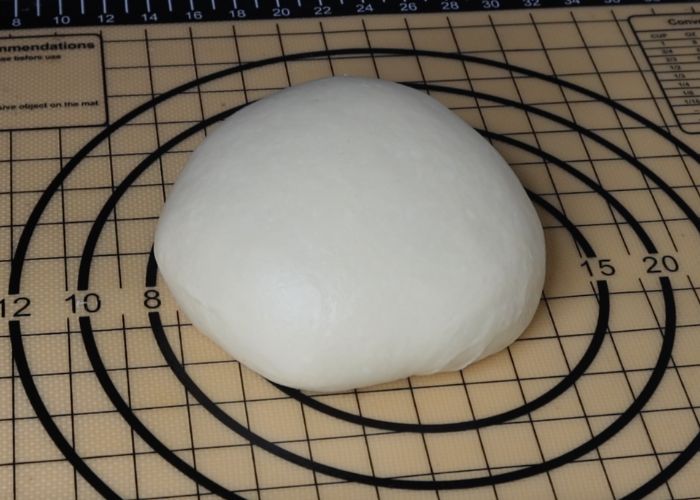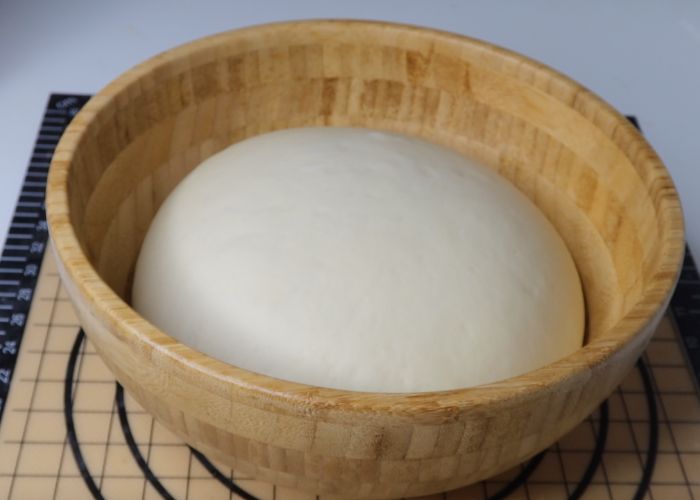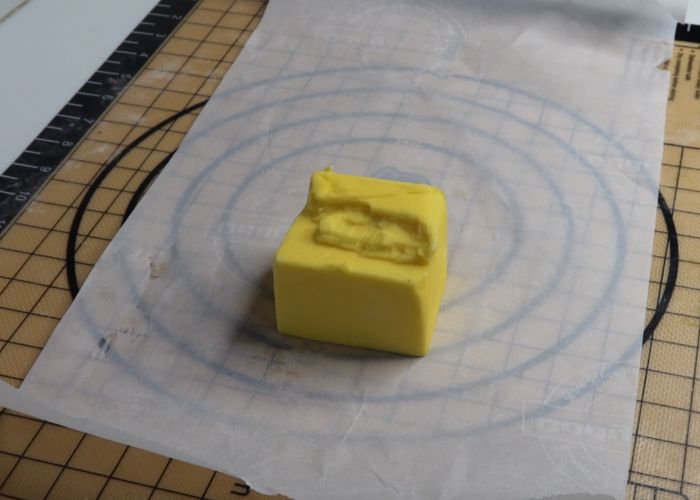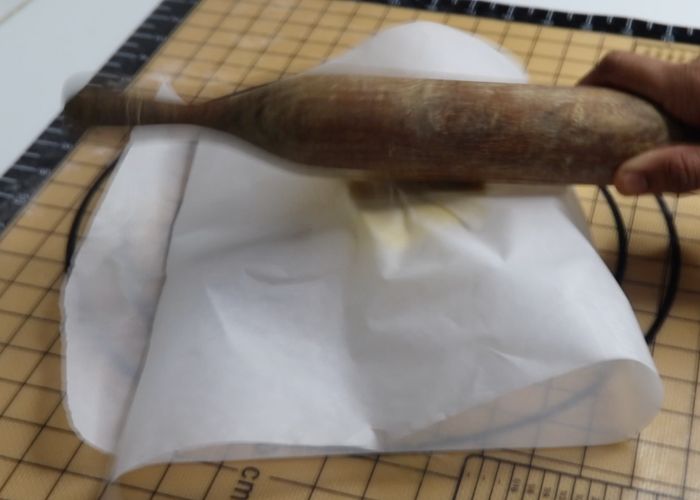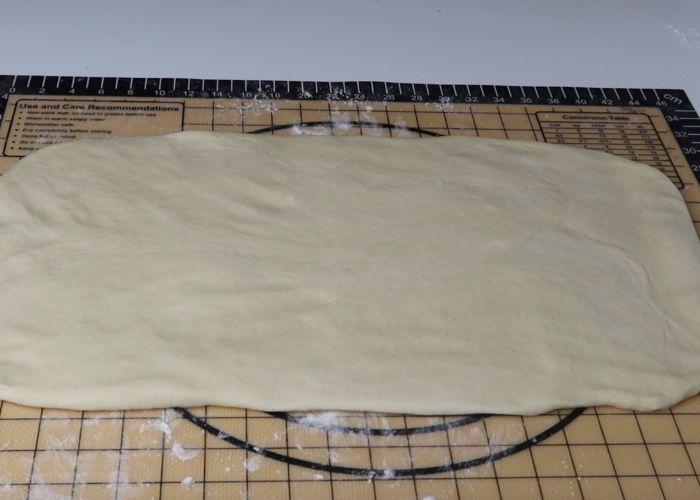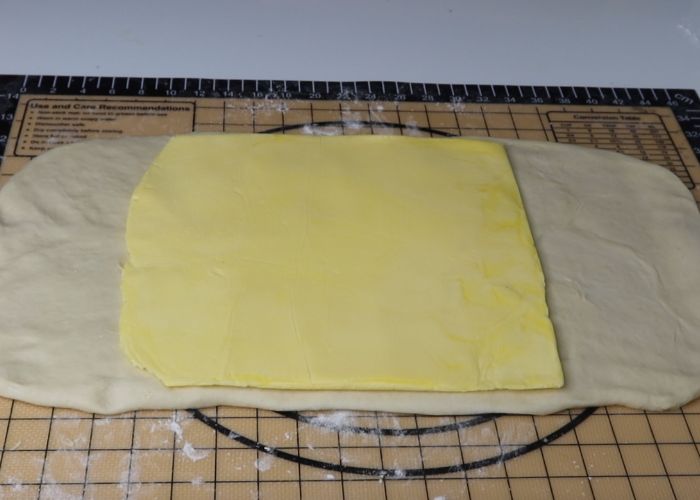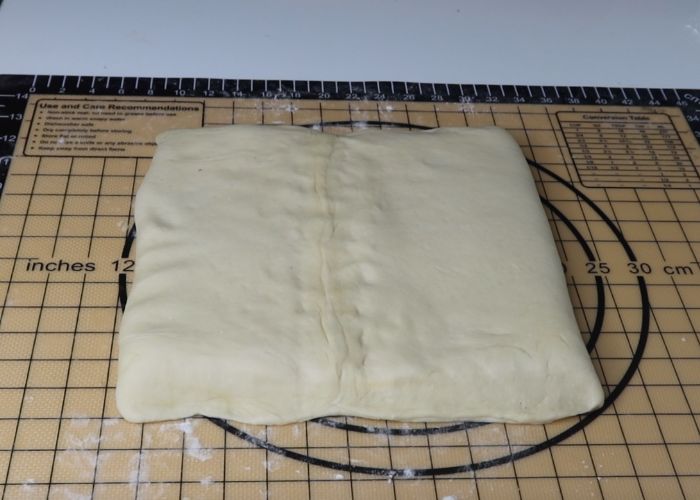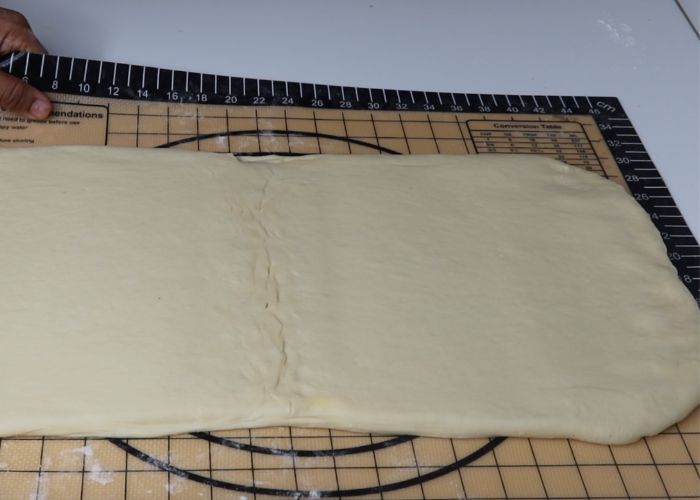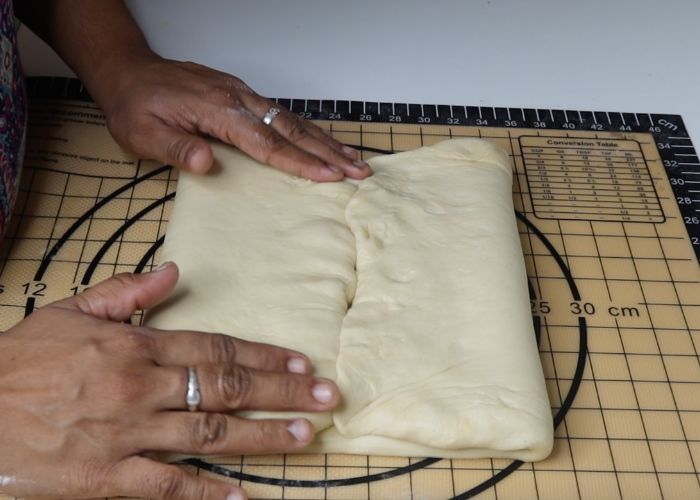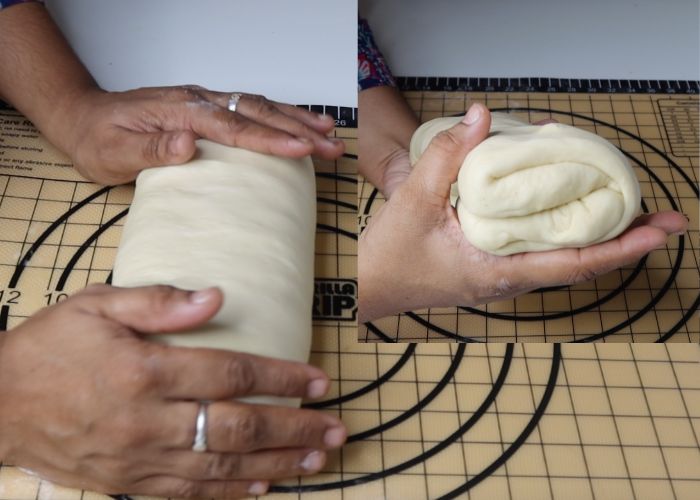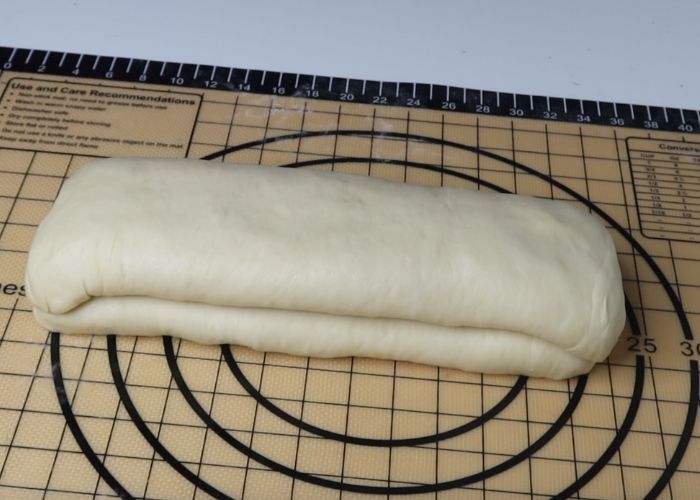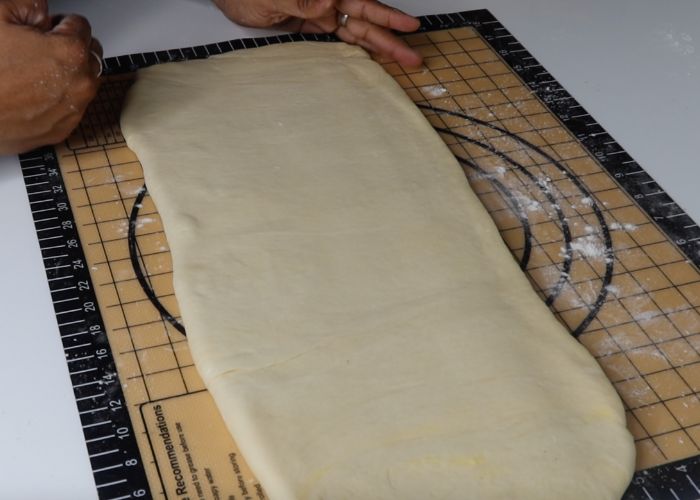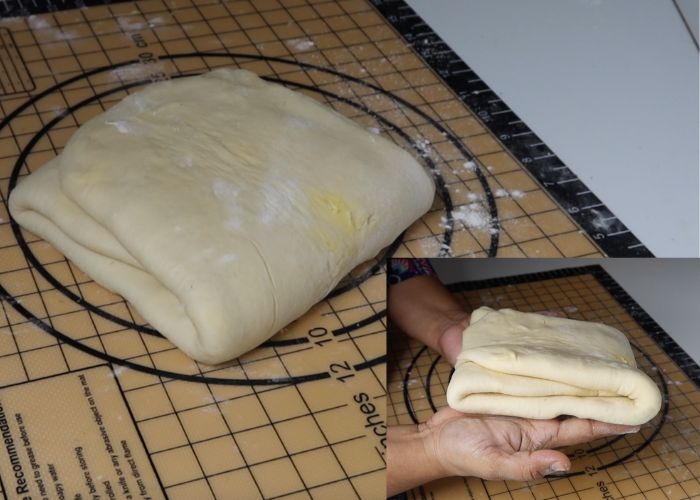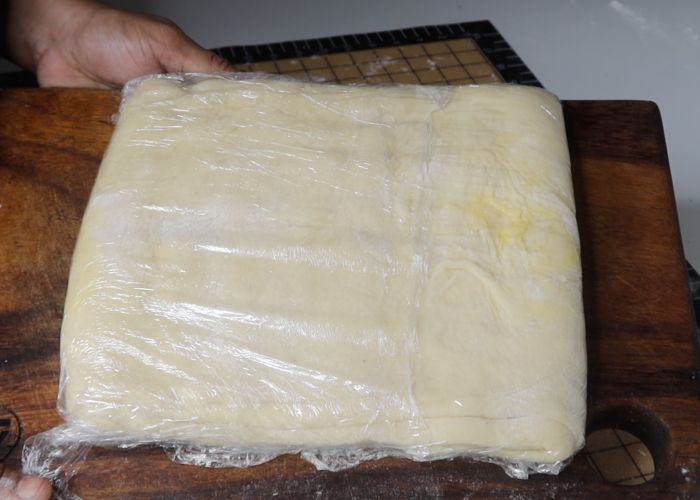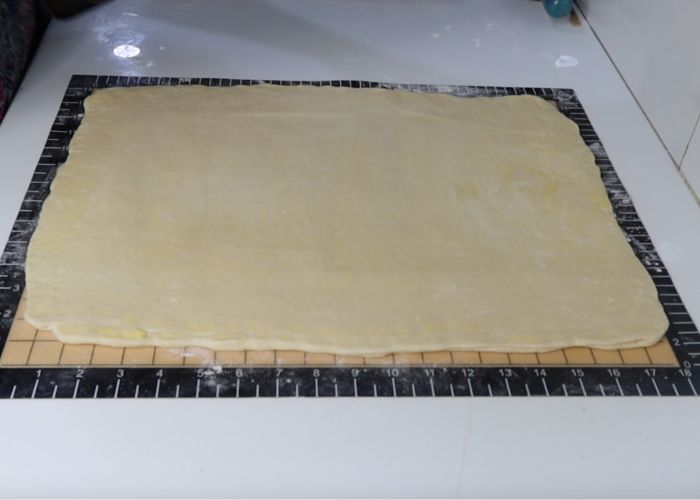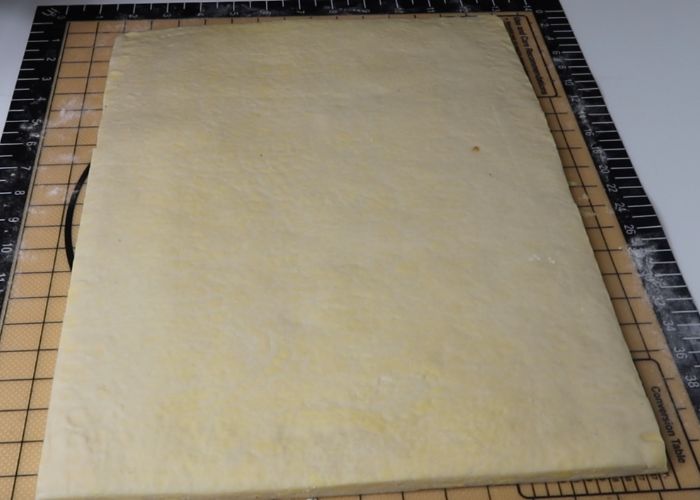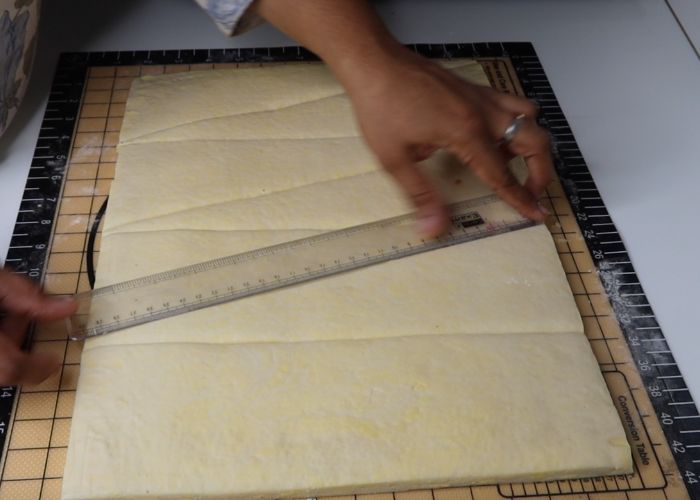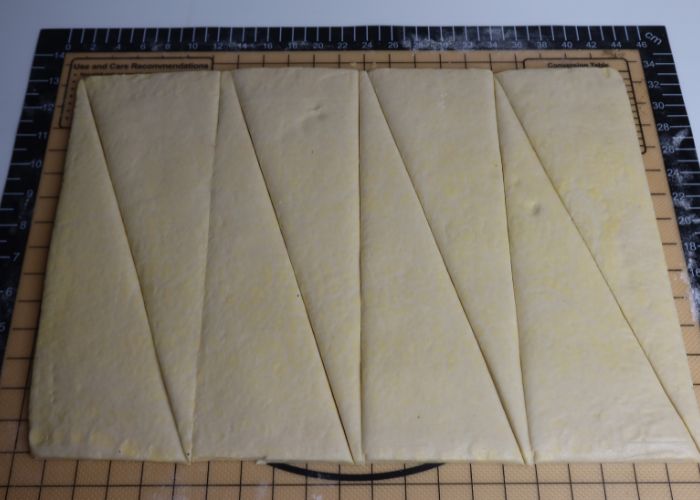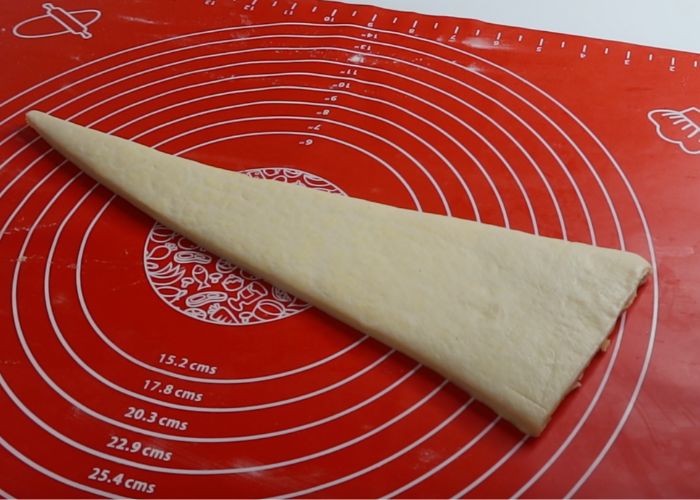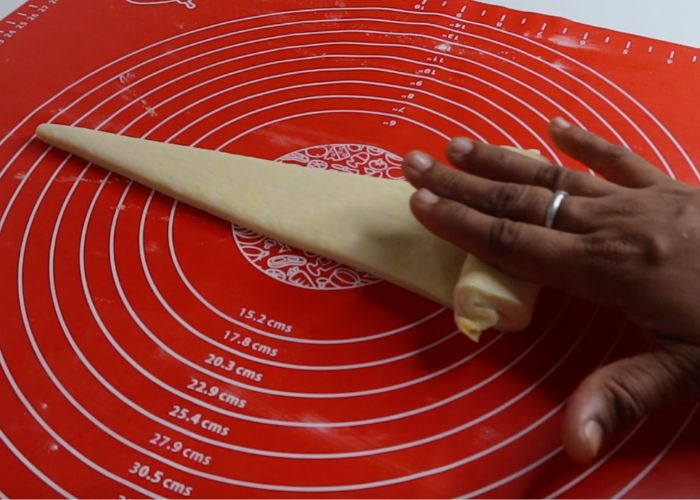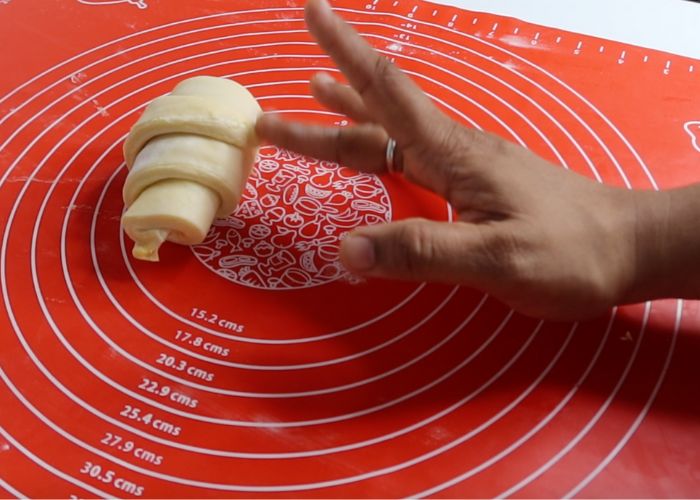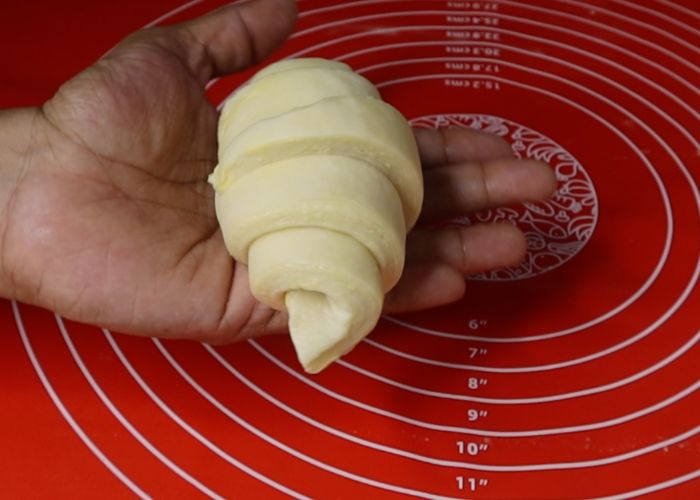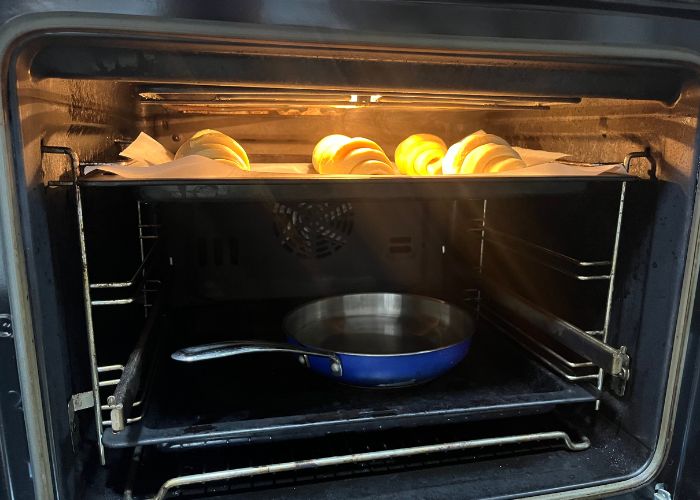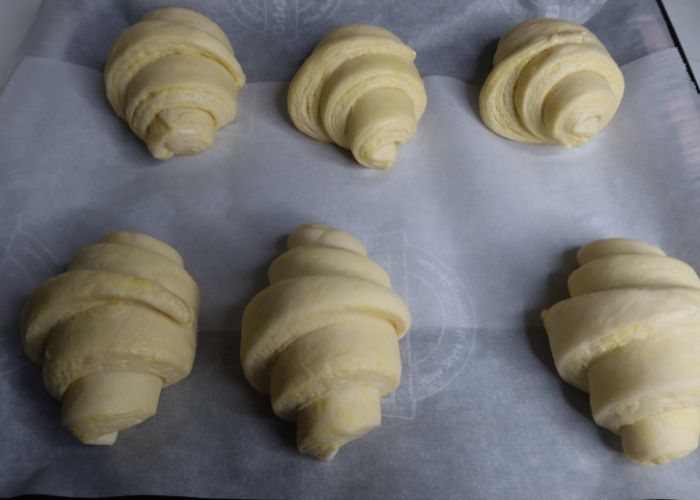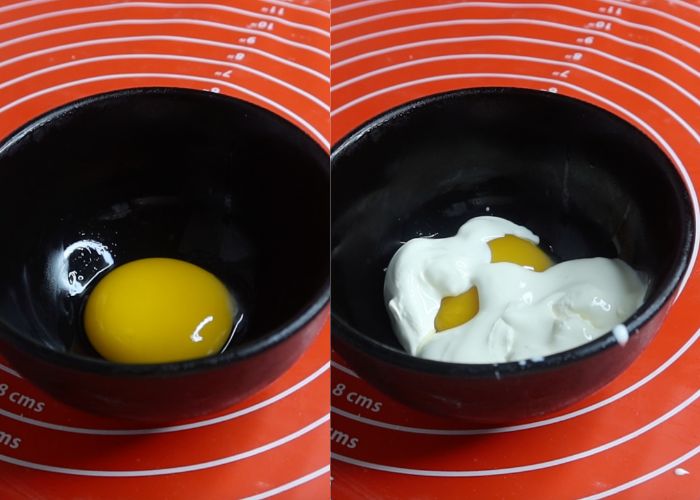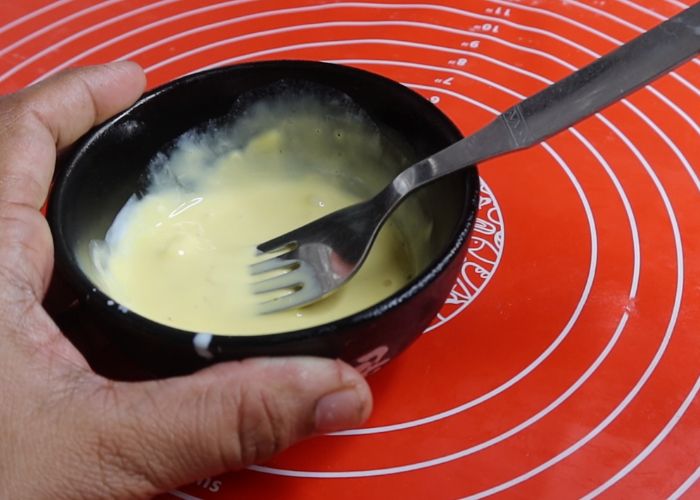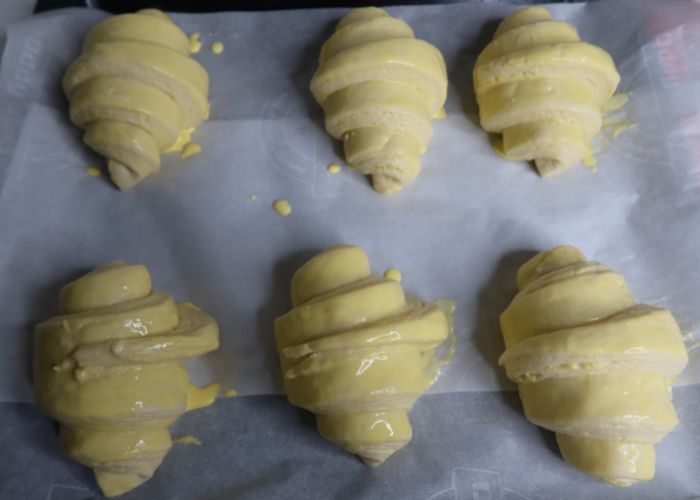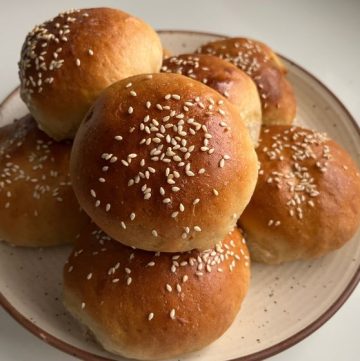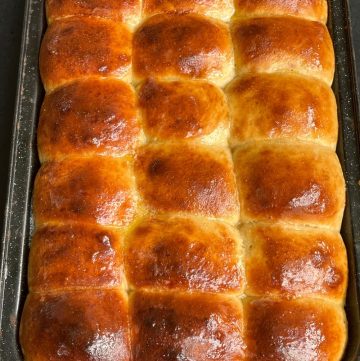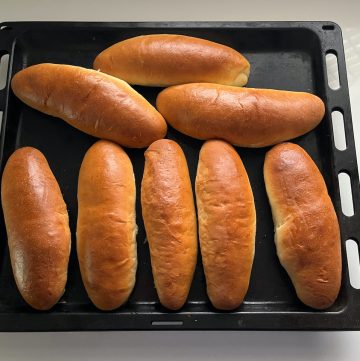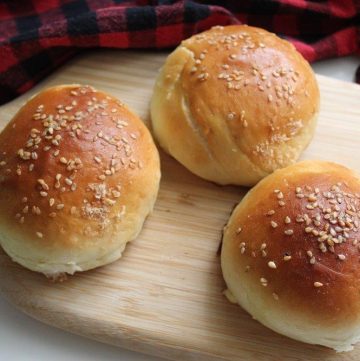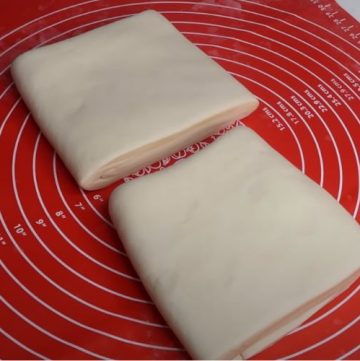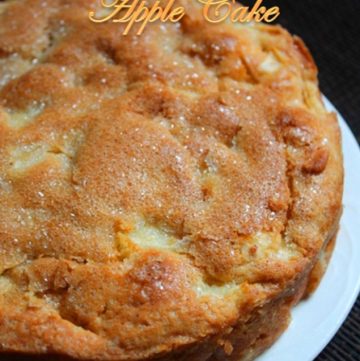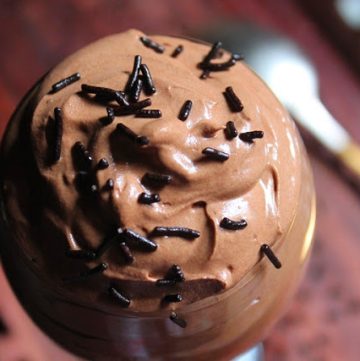Croissant recipe
I have been wanting to make croissants for a very long time. But I stayed away from it because of the process. It is time consuming and can be tricky. Once I tried my hands on it, I can see how easy it is to make and the end result is just wow. This croissant had lovely layers and the exterior is crispy and the interior is soft and buttery, flaky as well. I made this yesterday and it was a huge success. I had two warm croissants for breakfast with some soft scrambled eggs. Used this to make a croissant sandwich for lunch and I used croissant to make a delicious pudding.
What is a Croissant?
Croissant is a French pastry which is shaped as a crescent made using yeasted laminated dough. A rich butter yeast dough is laminated with butter block to create multiple layers when baked. Croissant is enjoyed for breakfast all over France and other parts of the world. It is usually served with a hot cup of French hot chocolate.
About Croissant Recipe
Croissant is a buttery, flaky pastry made with French yeast- leavened laminated dough. The dough for croissant is made with plain flour, sugar, salt, yeast, milk, and butter. This dough is laminated with butter block and folded in such a way to create multiple layers. Making croissant at home can be quite intimidating for many. But I got you covered in this. I made three batches of croissant in a single week to come up with this fail proof 100% success recipe.
Similar Recipes
Stuffed Buns Dinner Rolls Orange Rolls Wheat Buns
Watch Croissant Video
Why this Recipe Works?
Easy ingredients - this recipe uses simple, pantry staple ingredients which you might already have on hand. Step by step guide - I have given you step by step instructions with pictures and video for easy understanding. No fail recipe - I made three batches of croissant in a single week to come up with this fail proof 100% success recipe.
Similar Recipes
Christmas Sweet Bread, Semolina Bread, Cheese Bread, Wheat Bran Bread, Oats Bread, White Sandwich Bread, Soda Bread Rolls.
Homemade Croissant Ingredients
Flour - for making croissant dough, it is important to use high protein flour like bread flour. Dough has to be kneaded until it pass windowpane test. So choose flour which has high protein content. Sugar - sugar helps sweeten the croissant. You can add more sugar if you are making sweet pastry like almond croissant or chocolate croissant. Salt - like all bread dough, salt helps enhance the taste of the croissant. Dry yeast - even though you can add yeast straight into the flour and knead. To be on the safer side, I activated it in warm water and milk mixture before adding in the flour. Milk - using a combination of milk and water to knead the dough gives lighter and softer croissant. . Butter - don’t be shy in using butter. Try to find best quality butter you can afford in croissant making. If you can get your hands on French butter, opt for that. Egg - egg yolk is only used for egg wash croissant. It helps the croissant get the golden colour, glistening sheen. I use a combination of egg yolk and cream to brush over the croissant before baking.
Get Familiar with Croissant Turns & Folds
In the making of croissants, there are two folds used. First one is book fold and other is letter fold. These two folds creates tons of layers in croissant which makes it so light. First turn (double turn) - Once the dough is cold and the butter block has been locked into the dough. It is time to do the first turn also known as first fold which is also called as double turn or book turn. A double turn (a book fold) requires you to roll the dough out a bit longer than for a single, then to fold the edges into the middle, then over on itself again (like a book). Once this is done, gently pat the dough and press it with rolling pin so it flattens even more. Wrap it in plastic wrap and chill in fridge for 1 hour or in freezer for 30 minutes. Second turn ( simple turn) - once the dough has chilled. Take it out and roll it again into a rectangle. Now do the last turn, which is called simple turn or letter fold. Fold dough in third. Now flatten it again and chill in fridge for few hours till it is cold.
Must read before making croissant
All about croissant dough
Butter block
Keeping dough cold
Gentle when rolling
Never give pressure when rolling laminated dough. Use rolling pin gently so the dough spreads evenly. If you give pressure when rolling, it pushes the butter out of the dough which cause tears and holes.
Rest dough overnight
Once the final pre shaping is done. Place the rolled dough in fridge for 8 to 10 hours which makes the shaping process easier.
Cutting and Shaping Croissants
After overnight rest, it will be easy to cut the dough. You can use long measuring scales to measure and divide the dough into equal portions. After dough is cut into triangles, start rolling them tight into croissant shape. The dough has to be rolled as tight as possible which creates friction and makes croissant rise taller than flat.
Proofing environment
Steam oven - Authentic French pastry has steam oven where shaped croissants is left to proof. So to create a steamy situation, I place a pan of boiling water inside the oven to create a humid steamy atmosphere for the croissant dough to rise. Wobble test - to know that the croissant has proofed enough, croissant must have doubled in volume. gently shake the baking pan. You will see a gentle wobble in the croissant. This will ensure the croissant has proofed enough and ready to bake now.
Egg washing is important
Use only egg yolk and cream for egg wash. It gives golden sheen to the croissant. Use a paint brush to brush only the top of the croissant. Be careful not to apply egg wash on the sides which fuse the layers together which prevents the layers from separating.
During baking croissant
Make sure to rotate the baking pans in between to get even colour in croissants. Don’t over bake, which makes the croissants hard.
How to Make Croissants (Stepwise Pictures)
Activating yeast
1)You can use a mixing bowl or stand mixer to make the dough. Here I am using a mixing bowl and going to make the croissant dough by hands.
Take warm milk in a bowl.
2)Pour in warm water.
3)Add in sugar.
4)Now sprinkle yeast over the warm milk and allow it to rest for 5 minutes for the yeast to get foamy and activated.
5)Leave it for 5 minutes to allow the yeast to activate.
Making Croissant Dough
6)Once the yeast is activated, add in plain flour. For making croissant dough, it is important to use high protein flour like bread flour. Dough has to be kneaded until it pass windowpane test. So choose flour which has high protein content. 7)Mix it really well, the flour has to be hydrated with the water. 8)Once the dough has formed, add in butter and start mixing. 9)You have to knead it for at least 15 to 20 minutes until the butter is incorporated into the dough and dough is soft and smooth. 10)If you are using stand mixer knead for 10 to 15 minutes on low speed.
Windowpane test
11)Window pane test is very important to check whether the gluten development in dough is formed. This helps in getting the texture of the bread. Take a small ball of the dough and stretch it into a square. Keep on stretching until it becomes a thin film in the middle without breaking. The dough must be thin enough to pass light through it. If it is obtained without any tear, then your dough is properly kneaded. 12)Once the dough is kneaded. Shape it into a smooth ball.
First proof dough
13)Once the dough is well kneaded. Cover with a cloth and allow it to ferment for 30 minutes. It should be 50 percent of its original volume. Don’t let it ferment too long.
Chilling dough
14)once the dough has risen for 30 minutes, place it into fridge and let it sit for 1 hour. This step firms up the dough and also slows down the fermentation process.
Butter block
15)When the dough is fermenting. Let’s make butter block. Measure butter, it has to be cold. Place the butter between sheets of parchment paper. 16)Bash it using rolling pin to flatten it. Once it is flattened, cover the parchment to shape it into square shape. Roll it using rolling pin to flatten it into even square shape. 17)Once butter is shaped, place it in fridge or freezer for 30 minutes.
Locking in butter
18)once the dough and butter block has chilled in fridge. Take the dough from fridge and punch it down to remove the gas. Now take the dough onto a work surface. You can dust the work surface with some flour. 19) Now roll the dough into a long rectangle. 20)Place the butter block in the rolled rectangle. 21) Fold from both sides. Stretch the dough to seal the butter in. 22)No need for dough to overlap. Seal the sides and seams so no butter can escape.
First turn (double turn)
23)Gently lift the dough and turn it so seam side is vertical towards us. Dust flour lightly and start rolling into a long rectangle. 24)Now we are going to do the first turn, which is also called as double turn or book turn. A double turn (a book fold) requires you to roll the dough out a bit longer than for a single, then to fold the edges into the middle. 25)then fold over on itself again (like a book). Once this is done, gently pat the dough and press it with rolling pin so it flattens even more. 26)Wrap it in plastic wrap and chill in fridge for 1 hour or in freezer for 30 minutes.
Second turn ( simple turn)
27)once the dough has chilled. Take it out and roll it again into a rectangle. 28)Now do the last turn, which is called simple turn or letter fold. Fold dough in third. 29)Now flatten it again and chill in fridge for few hours till it is cold.
Pre-shaping and resting
30)Take the chilled dough and roll it gently around 23 cm in height and 40 cm in length. Place this in a baking tray, cover with plastic wrap and place it in fridge and leave overnight.
Trimming and cutting
31)once the rolled dough has rested overnight. Remove it from fridge and cut off the edges so expose the butter. 32)Now cut the rolled dough in four portions around 10 cm. Now cut each half in a long triangle. 33)You will get 8 triangles from this batch.
Shaping croissant
34)Take a triangle of the cutout dough. 35)Start rolling from the wider end and shape it into croissant shape. 36)Roll it tight. 37)Shaped croissant. 38) Place each rolled croissant in a parchment lined baking tray.
Proofing croissant
39)Take water in a sauté pan and bring it to a full boil. Place the pan into the oven to create a steamy environment for the croissant to proof. Place the shaped croissant with the baking tray into oven and allow it to proof for 30 to 40 minutes. 40)To know that the croissant has proofed enough, croissant must have doubled in volume. gently shake the baking pan. You will see a gentle wobble in the croissant. This will ensure the croissant has proofed enough and ready to bake now.
Preheating oven
41)During the last 10 minutes of proofing preheat oven to 200 degree c / 400 degree F for 10 mins.
Egg washing
42)Mix one egg yolk with some cream. 43)This is your egg wash. 44)Use a paint brush to brush only the top of the croissant. Be careful not to apply egg wash on the sides which fuse the layers together which prevents the layers from separating.
Baking croissant
45)place the baking tray into the 200 degree c preheated oven and bake for 20 to 22 minutes. Make sure to rotate the baking pans in between to get even colour in croissants. Don’t over bake, which makes the croissants hard. 46)Remove the baking tray from oven and allow them to cool for 5 minutes in the tray. Remove it and place it on a cooling rack to cool. 47)Enjoy.
Expert tips
High protein flour has to be used for making croissant dough. Use best quality butter for making croissant dough. Keep the dough chilled always which prevents leakage of butter. If you don’t use egg, you can brush the croissant with cream.
Serving and Storage
Croissants taste great when served hot right from the oven. You can enjoy fresh croissant with a cup of coffee, tea or hot chocolate. Croissants can be used in making almond croissants, chocolate croissants, egg cheese breakfast sandwich or caramel pudding. Leftover croissants can be stored in fridge upto 3 to 4 days. You can freeze croissants upto a month.
How to reheat frozen croissant
Preheat oven or air fryer to 180 degree c. Place croissants in a baking tray or air fryer. Bake croissants for 8 to 10 minutes until crispy. Enjoy hot.
Troubleshooting
1)Why my dough is hard?
If you find croissant dough hard, then there isn’t enough hydration in the dough. So when making the dough make sure it is soft enough and passes the windowpane test.
2)Why my dough breaks when rolling?
Croissant dough breaks when there isn’t enough gluten formation in dough. Ensure the dough passes window pane test so the dough doesn’t break during folds and turns.
3)Why butter leaking when baking croissant?
Dough is too warm which makes the butter to melt and pool the baking tray when baking. To prevent this from happening, resting the reshaped dough overnight is important.
4)Why my croissant is not rising?
Leaving the dough to over ferment during the initial process will make the yeast less active during the final rise. To prevent this from happening, make sure you chill (freeze) the dough in between to slow down the fermentation process.
1)What is a croissant?
Croissant is a buttery, flaky pastry made with French yeast- leavened laminated dough.
2)What is croissant made of?
The dough for croissant is made with plain flour, sugar, salt, yeast, milk, and butter. This dough is laminated with butter block and folded in such a way to create multiple layers.
3)Are croissants unhealthy?
Croissants are made with refined flour which is high in gluten. It mainly made with lots of butter which makes it fairly high in calorie. So consume in moderation.
4)Can I use plain flour when making croissant?
for making croissant dough, it is important to use high protein flour like bread flour. Dough has to be kneaded until it pass windowpane test. So choose flour which has high protein content.
5)Can I use margarine when making croissant?
Croissants are French pastry which is known for its buttery flavour and flaky texture. You get to enjoy the real taste when best quality butter is used. But you can use margarine in place of butter which will alter the taste of authentic croissant.
6)How long can I store croissant?
Leftover croissants can be stored in fridge upto 3 to 4 days. You can freeze croissants upto a month.
7)How to reheat frozen croissant?
Preheat oven or air fryer to 180 degree c. Place croissants in a baking tray or air fryer. Bake croissants for 8 to 10 minutes until crispy. Enjoy hot.
More Baked Buns & Bread Recipes
📖 Recipe Card
If you have any questions not covered in this post and if you need help, leave me a comment or mail me @[email protected] and I’ll help as soon as I can. Follow me on Instagram, Facebook,Pinterest ,Youtube for more Yummy Tummy inspiration. IF YOU MAKE THIS RECIPE OR ANYTHING FROM YUMMY TUMMY, MAKE SURE TO POST IT AND TAG ME SO I CAN SEE ALL OF YOUR CREATIONS!! #YUMMYTUMMYAARTHI AND @YUMMYTUMMYAARTHI ON INSTAGRAM!
More French Recipes to Try
